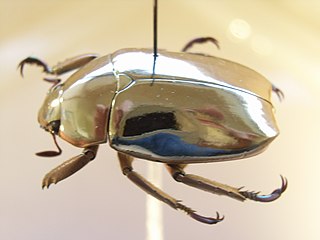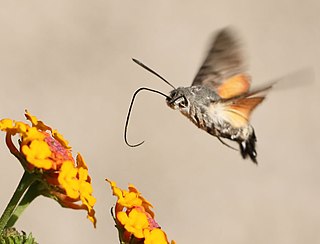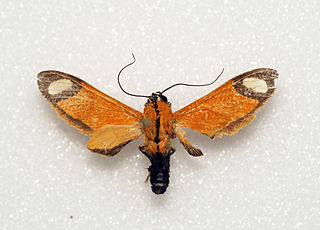
Hôtel Salomon de Rothschild is a hôtel particulier located at 11 rue Berryer in the 8th arrondissement in Paris, France. It is a former residence of Adèle von Rothschild (1843–1922), the widow of Salomon James de Rothschild of the Rothschild banking family of France. Designed by Leon Ohnet and constructed between 1872 and 1878, it is located in the heart of Paris, near the Rue du Faubourg Saint-Honoré.

The ruteline genus Chrysina, or jewel scarabs, is a large genus of brightly colored, often metallic iridescent species, ranging from the southwestern edge of the United States as far south as Venezuela and Ecuador. The genus includes all the species formerly known as Plusiotis. They are typically between 15–35 millimetres (0.59–1.38 in) in length, and are nocturnal in habits, coming readily to lights. The larvae live in rotting logs, while the adults commonly feed on foliage; they tend to be found in pine, juniper, or pine-oak forests, most commonly between 1,000–3,000 metres (3,300–9,800 ft) elevation. They are most diverse in countries such as Guatemala, where as many as 15 species can be found in a single location, but there are only 4 species which occur in the United States.
Ammalo is a genus of moths in the subtribe Phaegopterina in the family Erebidae. The genus was erected by Francis Walker in 1855.
Histoea is a genus of moths in the subfamily Arctiinae. The genus was erected by Francis Walker in 1854.

Melese is a genus of moths in the family Erebidae. The genus was erected by Francis Walker in 1854.
Pachydota is a genus of moths in the family Erebidae. The genus was erected by George Hampson in 1901.
Paracles is a genus of moths in the subfamily Arctiinae. The genus was described by Francis Walker in 1855. The species range from Panama to Patagonia, with quite a few in the southern temperate region of South America.

Paranerita is a genus of moths in the family Erebidae erected by George Hampson in 1901.

Macroglossini is a tribe of moths of the family Sphingidae described by Thaddeus William Harris in 1839.
Eupalamides cyparissias is a moth in the Castniidae family. It is widespread in the Amazon basin including Peru, Colombia, Ecuador, Venezuela, Brazil, the Guianas and north to Panama.

Rothschildia orizaba, the Orizaba silkmoth, is a moth in the family Saturniidae. The species was first described by John O. Westwood in 1854. It is found in Mexico, Central and South America.
Ammalo ammaloides is a moth of the family Erebidae first described by Walter Rothschild in 1909. It is found in Peru.
Araeomolis rhodographa is a moth of the family Erebidae. It was described by George Hampson in 1901. It is found in French Guiana, Venezuela, Colombia, Bolivia, Panama and the Brazilian state of Amazonas.
Ammalo pachycera is a moth of the family Erebidae. It was described by Seitz in 1922. It is found in Bolivia.
Paracles peruviana is a moth of the subfamily Arctiinae first described by Rothschild in 1910. It is found in Peru.
Melese peruviana is a moth of the family Erebidae. It was described by Walter Rothschild in 1909. It is found in Peru.

Ormetica contraria is a moth of the family Erebidae. It was described by Francis Walker in 1854. It is found in French Guiana, Guyana, Brazil, Ecuador, Peru and Bolivia.
Pachydota peruviana is a moth of the family Erebidae. It was described by Walter Rothschild in 1909. It is found in Peru and Colombia.
Paranerita peruviana is a moth of the subfamily Arctiinae. It was described by Walter Rothschild in 1909. It is found in Peru.

Pseudohemihyalea klagesi is a moth in the family Erebidae. It was described by Walter Rothschild in 1909. It is found in Brazil.






